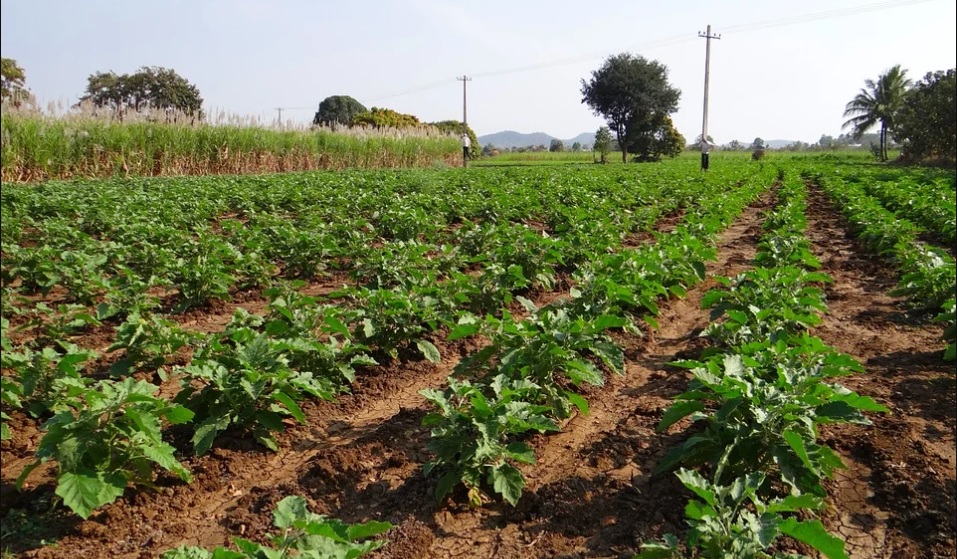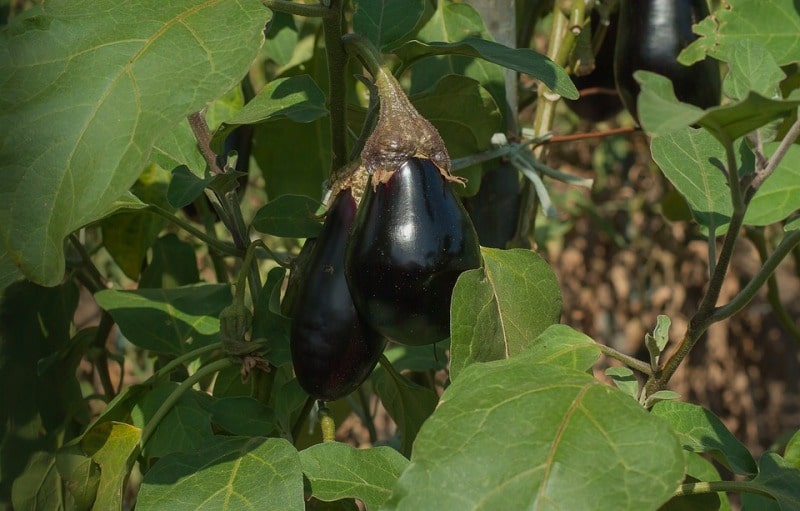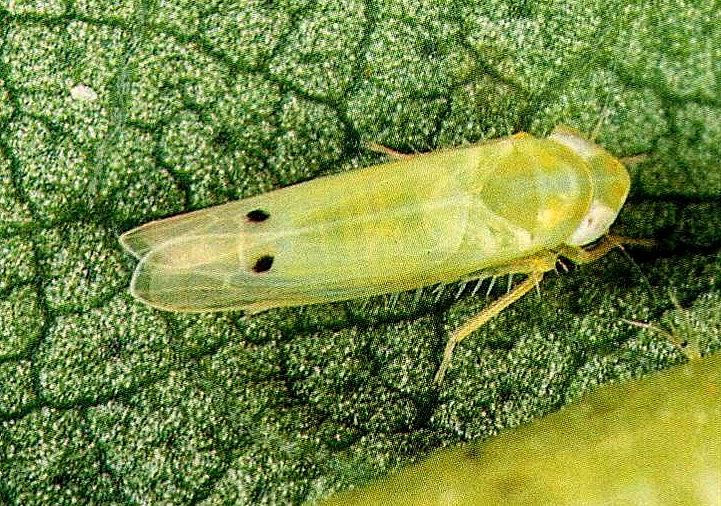Symptoms and management of Phomopsis blight disease in brinjal crop
-
The cause of the disease is a fungus called Phomopsis vexans, which usually targets the brinjal crop,
-
Symptoms of the disease appear on the leaves, stems and fruits, small gray to brown spots appear on the leaves, which gradually spread over the entire leaf, in case of more infection, the leaves get scorched, along with this the symptoms of the disease also appear on the fruit and stem, sunken brown spots are formed on the fruit, which join together and affect the entire fruit, resulting in rotting and falling of the fruit.
-
Prevention Measures – Spraying withJatayu (Chlorothalonil 75% WP) (@ 400 gm or Conica(Kasugamycin 5% + Copper Oxychloride 45% WP) (Conica) @ 300g + Silico Max (Sticker)@50 ml in 200 liters of water per acre spray.
Biological treatment – Spraying with Pseudomonas fluorescens @ 250 -500 gm/acre
ShareFor more such important information related to the agriculture sector, keep reading the articles of Gramophone daily. If you liked today’s information, then do not forget to like and share.
Outbreak of nematode in Brinjal crop
- Due to nematodes in the soil, nodes are formed in the roots of brinjal plants.
- Due to its outbreak, the roots of the plants are not able to absorb nutrients. Due to this, there is a big decrease in the number of flowers and fruits.
- Leaves start to turn yellow and the entire plant remains dwarf.
- The plant dies after dying due to excess infection.
- Do not plant brinjal, chilli, and tomato crops for 2-3 years in the field where problems already appear.
- Do deep plowing in the affected field in summer.
- Apply marigold between 1-2 rows of brinjal crop.
- Mix 3% of Carbofuran @ 10 kg/ acre before planting.
- For biological control of nematodes, mix 200 kg Neem cake or 2 kg Verticillium chlamydosporium or 2 kg Paecilomyces lilacinus or 2 kg Trichoderma harzianum with 100 kg of good rotten dung and mix it at the rate of one acre per acre.
How to manage fertilizer in rainy season Brinjal?
- The nursery is sown in February-March for rainy season brinjal.
- Brinjal plant is ready for transplanting in the main field after 30-40 days.
- Add the fertilizer amount to the field according to the soil test report or
- Before transplanting the plant, apply 90 kg Urea, 250 kg Single Super Phosphate (SSP), and 100 kg Muriate of Potash (MOP) along with FYM.
- Divide 90 kg of Urea into three parts. The first part of urea is given 30-40 days after transplanting, the second part after the next 30 days, and the third installment or part in the form of top dressing at the time of flowering.
Management of Jassids in Brinjal crop –
- Jassids can be controlled by spraying Acetamiprid 20 % WP @ 80 Gm/acre or
- spray Imidacloprid 17.8% @ 80 Ml/Acre 20 days after transplanting.
- Spray evident (Thaimethoxam ) @ 100 gm/acre or
- Spray abacin (Abamectin 1.8% EC) @ 150 ML
how to identify Jassids in Brinjal crop –
- Nymphs and adults suck the sap from the lower surface of the leaves.
- The infected leaf curls upward along the margins, which may turn yellowish and show burnt up patches.
- They also transmit mycoplasma diseases like a little leaf and virus disease like a mosaic.
- Fruit setting is adversely affected by the infestation.






